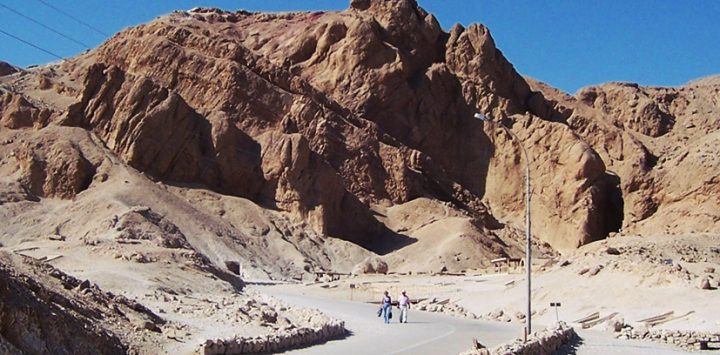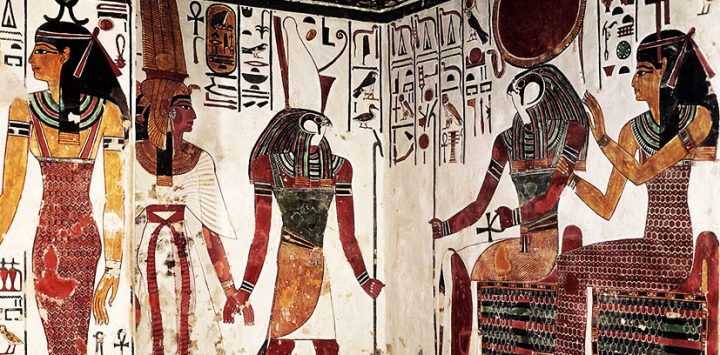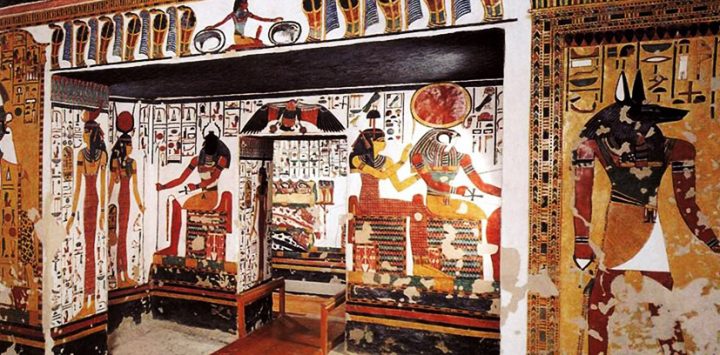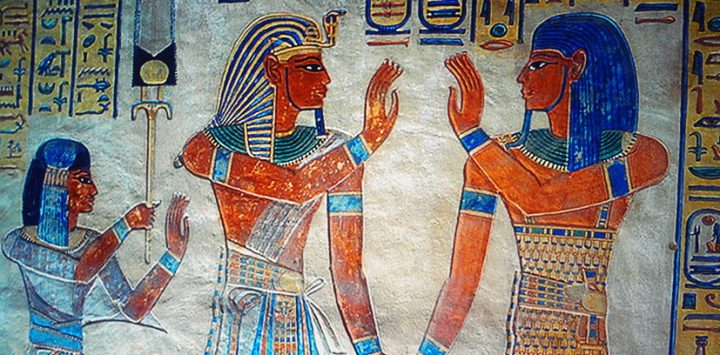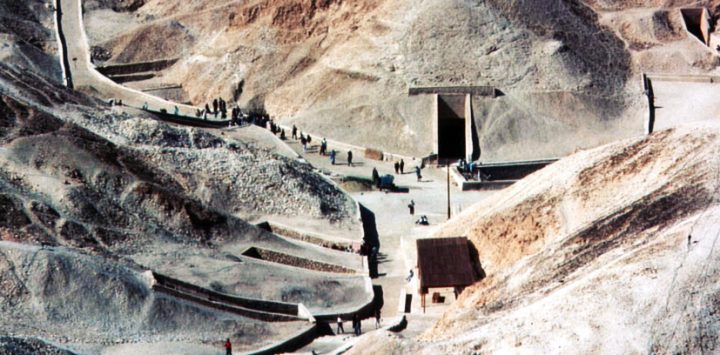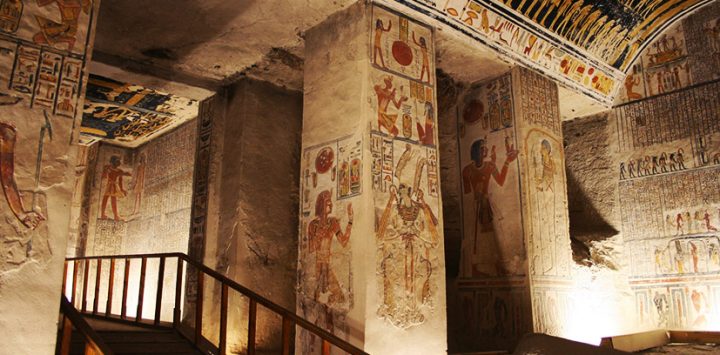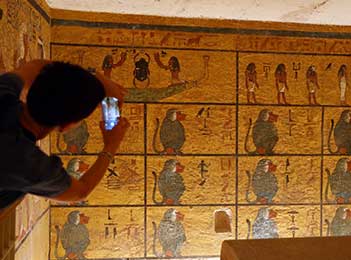Geographical location of the Valley of the Queens
Situated to the West South of the Valley of the Kings, the Valley of the Queens is situated near many other monuments like the Temple of Hatshepsut , the Colossi of Memnon, and the Temple of Ramses III of Madinet Habu.
The guests who visit Egypt can simply use the national ferry for less than a pound to cross the River Nile from the East to the West Bank. Moreover, they can hire a motorboat or take a taxi that will cross the river from the new bridge of Luxor, situated around 9 kilometers to the north of the center of the city of Luxor, to reach the West Bank of the Nile and then to the Valley of the Queens.
The history of the Valley of the Queens
Only the wives of the kings who were entitled as Royal wife were not buried with their husbands in the Valley of the Kings. They were actually buried in the valley that was believed by the ancient Egyptians to be sacred to the goddess Hathor, situated to the west south of the Valley of the Kings.
The Valley of the Queens did not only host the dead bodies of the royal wives of the kings of the New Kingdom of ancient Egypt, but it also hosted the bodies of princes and some of the highest officials of the state.
The ancient Egyptians called the Valley of the Queen the land of the children of the king. It was Champollion, the famous French archeologist and history scholar who named this area as the Valley of the Queens in the 19th century.
The 80 tombs situated in the Valley of the Queens were mostly dig during the ruling period of the 18th and the 19th dynasties in the period from the 16th till the 12th centuries BC.
The description of the Valley of the Queens
Numerous tourists who spend their holidays in Egypt visit the Valley of the Queens every day. Although the Valley of the Queens has more than 80 tombs, only around 7 to 10 tombs are usually opened for public visit at a time.
Maybe the most magnificent tomb of the Valley of the Queens is that of Queen Nefertari, the most favorite wife of the king Ramses II, the most famous builder of ancient Egypt.
Discovered by Schiaparelli, an Italian archeologist in the beginning of the 20th century, the tomb of Queen Nefertari is considered by many scholars as one of the most important achievements of ancient Egypt due to its amazing wall paintings that survived over a very long period of time.
When the guests who visit Egypt enter the tomb of Queen Nefertari, they enter the antechamber via some steps that were cut our rock.
The antechamber is famous for its wall paintings that reflect some of the concepts in the Book of the Dead of ancient Egypt. The ceiling of this chamber is also featured for its astronomical ceiling with its dark blue and golden colors.
The side chamber of the tomb of Queen Nefertari has some offering scenes. Afterwards, the burial chamber has a surface area of more than 90 square meters with four large pillars decorated with different scenes of the queen.
Another interesting tomb in the Valley of the Queens that is often visited by travelers spending their tours in Egypt is that of Khaemwaset, the son of Ramses III.
The tomb consists mainly of a long corridor with a number of side chambers that lead at the end to the burial chamber. The vestibule with its remarkable astronomical ceiling with the walls shows the king, Ramses III, escorted by his sons. A common scene in this tomb is that the prince, Khaemwaset, always follow his father, Ramses III, as the king is presenting his son to the gods.
Another wonderful tomb at the Valley of the Queens is the tomb of Amun Her Khepshef, the brother of Khaemwaset, the sons of Ramses III.
The two tombs of the two brothers are quite similar in their layouts that consist of a long corridor. The difference is that in the tomb of Amun Her Khepshef, who died while he was only 15 years old, is that the side chambers lay only on the right hand side of the corridor and they have no decoration, maybe because of the sudden death of the young prince.
Inside the tomb, some short steps lead to the vestibule that is dominated by scenes of Ramses III presenting his son to the gods. The burial chamber is featured with scenes from the book of the dead.
Other interesting tombs in the Valley of the Queens include that of Queen Titi, who belongs to the 20th century and although many sections of the tomb are damaged, some other parts are featured with wonderful bright wall paintings.
The Valley of the Queen is one of the most amazing historical sites of the West Bank of Luxor. It is usually less crowded than the Valley of the Kings. However, it is never less charming. Many Egypt travel packages would include a visit to the Valley of the Queens.

